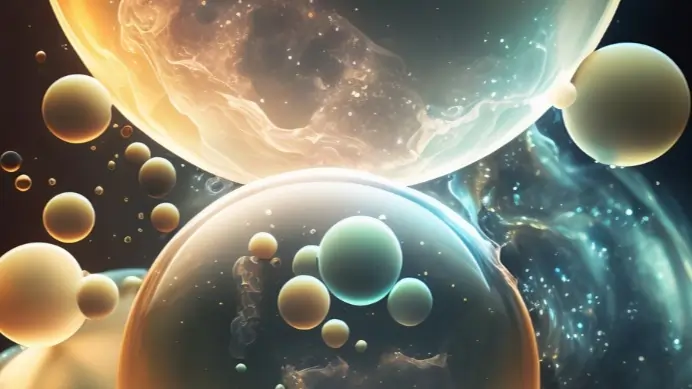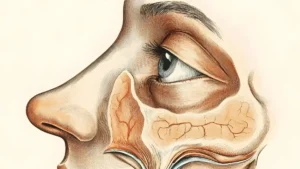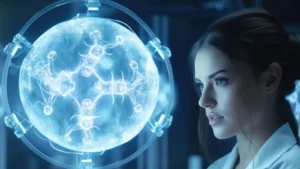Introduction
Have you ever looked at a glass of water and wondered what makes it… well, water? Or gazed at the stars and thought about what connects you to those distant celestial bodies? The answer lies in the incredible world of molecules and atoms – the tiny, invisible building blocks that make up everything around us, including you!
Welcome to a journey into the smallest yet most important parts of our universe. Today, we’ll explore how these microscopic particles shape our entire reality, from the air we breathe to the complex processes happening inside our bodies right now.
What Are Atoms?
Think of atoms as nature’s ultimate LEGO blocks. An atom is the smallest particle of an element that still keeps all the special properties of that element. Just like how a single LEGO brick is the basic building piece for amazing structures, atoms are the fundamental units that everything is made from.
But here’s something mind-blowing: atoms are incredibly tiny. If you could line up atoms side by side, it would take about 100 million atoms to equal the width of your fingernail. Even the most powerful microscopes can’t show us a single atom clearly because they’re just too small for light to bounce off them properly.
Inside an Atom
Every atom is like a miniature solar system with three main players:
Protons: These positively charged particles live in the center (nucleus) of the atom
Neutrons: These neutral particles also hang out in the nucleus
Electrons: These negatively charged particles zoom around the nucleus in energy levels
The amazing part? The nucleus contains almost all the atom’s weight but takes up an incredibly small space. If an atom’s nucleus were the size of a marble, the whole atom would be as big as a football field! This means everything you touch is mostly empty space – pretty wild, right?
The Discovery of Atoms
The idea of atoms goes way back to ancient Greece, but it wasn’t until the early 1800s that scientists like John Dalton proved they really existed. Since then, we’ve learned that atoms come in different types called elements – there are 118 known elements today, from simple hydrogen to complex synthetic ones.
What Are Molecules?
Now, while atoms are pretty cool on their own, they really shine when they work together. A molecule is formed when two or more atoms join together through chemical bonds. Think of it as atoms holding hands to create something completely new and different.
Molecules can be made from:
The same type of atoms: Like oxygen gas (O₂), where two oxygen atoms bond together
Different types of atoms: Like water (H₂O), where two hydrogen atoms bond with one oxygen atom
Real-World Examples You Know
Let’s look at some molecules you encounter every day:
Water (H₂O): Two hydrogen atoms bonded to one oxygen atom – this simple combination creates something essential for all life
Carbon dioxide (CO₂): One carbon atom bonded to two oxygen atoms – what you breathe out and plants breathe in
Sugar (C₆H₁₂O₆): A more complex molecule made from carbon, hydrogen, and oxygen atoms arranged in a specific pattern
Salt (NaCl): Sodium and chlorine atoms that taste completely different together than they do apart
These examples show how the same atoms can create completely different substances depending on how they’re arranged and bonded together.
The Key Differences Between Molecules and Atoms
Understanding the differences between molecules and atoms helps us grasp how our world works:
| Aspect | Atoms | Molecules |
|---|---|---|
| Size | Extremely small (0.1-0.5 nanometers) | Larger, made of multiple atoms |
| Composition | Protons, neutrons, electrons | Two or more atoms bonded together |
| Independence | May exist alone or bonded | Can exist independently as compounds |
| Stability | Often reactive, seeking stability | Usually more stable through bonding |
Molecules and Atoms in Your Daily Life
In Your Body
Every breath you take involves oxygen molecules (O₂) entering your lungs and carbon dioxide molecules (CO₂) leaving. Your DNA is made of complex molecules that carry all the information needed to make you uniquely you. Even your thoughts happen because of molecules in your brain communicating with each other.
In Your Food
When you eat, your body breaks down food molecules to release energy. The sweet taste of sugar comes from specific sugar molecules interacting with taste receptors on your tongue. The caffeine in your morning coffee? That’s a molecule too, specifically designed by nature to keep you alert.
In Technology
The smartphone you’re probably reading this on works because of carefully arranged atoms in computer chips. The screen displays colors through atoms that emit different types of light when electricity passes through them.
Chemical Bonds
Molecules and atoms don’t just randomly stick together – they form specific connections called chemical bonds. These bonds are like invisible glue that holds atoms together in molecules.
The main types include:
Covalent bonds: Atoms share electrons (like in water molecules)
Ionic bonds: Atoms transfer electrons (like in salt)
Hydrogen bonds: Weaker attractions that give water its special properties
The type of bond determines how strong the molecule is and what properties it will have.
Elements: The Atom Families
Atoms come in different types called elements, and they’re all organized in something called the periodic table. Some you might know:
Hydrogen (H): The simplest and most common atom in the universe
Carbon (C): The backbone of all life on Earth – it’s in everything from your DNA to your morning toast
Oxygen (O): Essential for breathing and found in water
Gold (Au): Made of atoms that are identical whether they’re in a wedding ring or dental filling
Each element has its own personality based on how many protons it has in its nucleus.
From Simple to Complex: Nature’s Building Strategy
The beauty of molecules and atoms lies in their ability to create infinite complexity from simple building blocks. Just like how 26 letters create countless words and stories, about 100 natural elements create millions of different molecules and compounds.
This principle explains some fascinating things:
Why water is wet but hydrogen and oxygen gases are not
How the same carbon atoms can form both soft graphite (in pencils) and hard diamonds
Why different foods have unique flavors even though they’re made from the same basic elements
The Future of Atoms and Molecules
Scientists continue discovering new ways to understand and manipulate molecules and atoms. This knowledge is leading to exciting developments:
Medical breakthroughs: Designing molecules that target specific diseases while leaving healthy cells alone
New materials: Creating substances stronger than steel but lighter than plastic
Clean energy: Finding better ways to capture and store solar energy using specially designed molecules
Environmental solutions: Developing molecules that can break down plastic pollution or capture carbon from the air
Conclusion
As we wrap up our journey into the world of molecules and atoms, remember that you’re not just learning about distant scientific concepts. You’re discovering the very essence of what makes you and everything around you possible.
Every time you breathe, drink water, or even think a thought, billions of atoms and molecules are working together in perfect harmony. You’re a walking, talking example of how these tiny particles can organize themselves into something as complex and amazing as a human being.
The next time you look around, you’ll see the world differently. That cup of coffee? A complex mixture of thousands of different molecules working together to create that perfect morning boost. The air you breathe? Mostly nitrogen and oxygen molecules dancing around you. Even your emotions involve special molecules in your brain having conversations with each other.
What’s truly remarkable is that despite being made of the same basic building blocks as a rock or a star, you’re capable of consciousness, creativity, and love. That’s the real magic of molecules and atoms – they don’t just build our physical world, they make life itself possible.
Ready to explore more fascinating science topics? Share this post with someone who loves learning, and let us know in the comments what aspect of molecules and atoms amazed you most.
Don’t forget to subscribe for more mind-blowing science content that makes the complex world around us simple, exciting, and wonderfully understandable!




